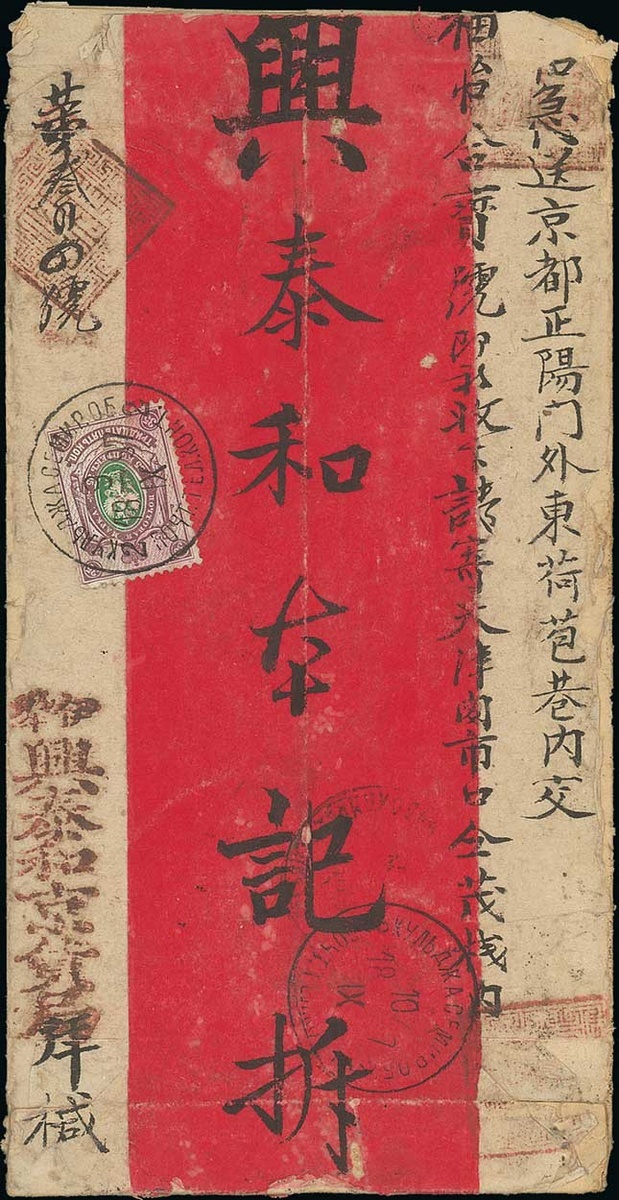
Auction: 18008 - Sinkiang Postal History, The 'Manhattan' Collection
Lot: 2001
Sinkiang
Russian Post Office
Kuldja
1897 (9 Sept) red band cover registered to Peking via Troitskosavsk bearing Arms 35k. tied by a very fine strike of type K4 c.d.s. with further strike on reverse with the despatch c.d.s. (10.9) below, there is a faint strike of "
Russian Post Offices in Sinkiang
In 1851, the Treaty of Kulja was established, and many Russian merchants swarmed into Sinkiang. The Russian merchants killed approximately 200 mineworkers at Chuguchak, which enraged the local people, who burned the Russian trade circle down. As a result, the Russians forced the Qing government to pay heavy war reparations. In 1871, the Russian Empire conquered the area of Ili, and many Russian merchants migrated there.
An anti-Russian uproar broke out in Kashgar in January 1902 when Russian customs officials, 3 Cossacks and a Russian courier invited local Turki Muslim (Uyghur) prostitutes to a party. After the riot, the Russians sent troops to Sarikol in Tashkurghan and demanded that the Sarikol postal services be placed under Russian supervision, the locals of Sarikol believed that the Russians would seize the entire district from the Chinese and send more soldiers even after the Russians tried to negotiate with the Begs of Sarikol and sway them to their side, they failed since the Sarikoli officials and authorities demanded in a petition to the Amban of Yarkand that they be evacuated to Yarkand to avoid being harassed by the Russians and objected to the Russian presence in Sarikol, the Sarikolis did not believe the Russian claim that they would leave them alone and only involved themselves in the mail service
Kuldja was a capital of the Ili basin region. It is located about 600 kilometres west of Urumchi. A Russian consulate was established in 1851. To halt the possible British military influence moving from India to this region, the Russians occupied Kuldja in 1871, this occupation lasting ten years. Russia agreed to return the Ili basin region to China after the Treaty of St. Petersburg in 1881.
Note that the stamps were cancelled by the Post Office when the letters were accepted. Another datestamp was applied when the mail was despatched, usually the following day. There appear to be some inconsistencies in the dates of some postmarks, this is due to the differences in the Julian calendar still used by Russia ane the Gregorian calender used in China and other countries.
Kurt Adler, August 1974
Sold for
HK$38,000




